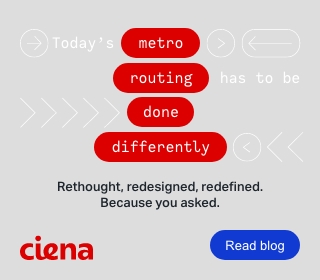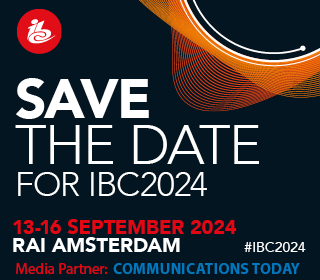Daily News
India Telecoms Towers Market Reaches A New Normal
Posted by Fitch Solutions
With the July 2019 announcement that Brookfield Asset Management will acquire Reliance Jio’s tower assets through a multi-stage deal worth INR252.2bn (USD3.6bn), we view that consolidation opportunities in the Indian towers market are now slim, given that all three major mobile operators have now spun off their tower assets to specialized tower companies (towercos) (see ‘Operators To Seek Towers Divestment’, April 12 2018). The new-look towercos will now focus on driving service quality enhancements by pursuing ‘fibreisation’ of their towers as a key priority, and improve cost-efficiency by looking at cheaper and more reliable sources of electricity. Overall, the continued trend of towers divestment plays into our long-held ‘Operator-as-a-Service’ view.
The conclusion of the wave of consolidation will see the emergence of three large established towercos: Bharti Airtel – Indus Towers, Reliance Jio and American Tower, which will collectively control nearly 80% of the estimated total tower count in India. The newly merged Bharti Infratel – Indus Towers company, which reportedly completed its merger in August 2019, is set to be the biggest towerco. However, with Reliance Jio in July 2019 announcing that it was keen to make another attempt to acquire the 45,000 towers owned by the now-defunct Reliance Communications, it could overtake the Bharti Infratel-Indus tie up for pole position.
COMPETITIVE LANDSCAPE TO LOOK FUNDAMENTALLY DIFFERENT…
| Towerco | Ownership | Towers Owned (June 2019) |
| Bharti Infratel – Indus Towers (post-merger) | Airtel (37.2% – could be reduced further), Vodafone Group Plc (29.4%), KKR and Canada Pension Plan Investment Board (10.3%), Providence Equity Partners (1.1%), Public (21.9%) | 164,435 |
| Reliance Jio Infratel | Brookfield Asset Management (100%) | 170,000 (includes an estimated 40,000 monopoles and 45,000 potentially from Reliance Communications) |
| American Tower Company India | American Tower Company (100%) | 74,046 |
| GTL Infrastructure | Tirodkar Manoj Gajanan (19.4%), IDBI Trusteeship SER Ltd (16.7%), Central Bank of India (7.7%) | 28,000 |
| Others | N/A | Approximately 84,000 |
| TOTAL | – | Approximately 520,000 |
| Note: Ownership composition after their purported mergers. Towers data estimated where not available. Source: Company disclosures, news sources, Fitch Solutions | ||
|---|---|---|
| Date | Development |
| September 2017 | The Cabinet approves state-owned BSNL’s plans to spin off its towers arm, which held over 66,000 towers at that time. |
| April 2018 | Vodafone completes sale of 10,238 towers to American Tower. |
| April 2018 | Bharti Infratel and Indus Towers reach agreement to merge. |
| June 2018 | Idea Cellular completes sale of 9,031 towers to American Tower. |
| January 2019 | Airtel announces plans to monetise stake in Bharti Infratel after merger with Indus Towers is completed. |
| July 2019 | Reliance Jio reaches agreement to sell complete towers portfolio to Brookfield Asset Management. |
| July 2019 | Bharti Infratel expects merger with Indus Towers, which is now only pending Department of Telecommunications (DoT) approval, to close in August 2019. |
| July 2019 | Reportedly, Reliance Jio is planning to once again bid for the now-bankrupt Reliance Communications’ 43,000 towers, and spectrum assets. |
| Note: List is non-exhaustive. Source: Company disclosures, news sources, Fitch Solutions | |
|---|---|
Mergers Drive Down Tenancy Ratios
The exits of Aircel and Reliance Communications from the market coupled with the wave of mergers of mobile operators has led to an industry-wide decline in tower tenancy ratios as operators decommission redundant sites and bankrupt telcos remove their equipment from the masts altogether. Bharti Infratel and Indus both reported significant declines in their tower sharing factors, while American Tower stated that organic tenant billings continued to slide in Q219. The merger of Vodafone and Idea Cellular preceded the exit of 14,000 low utilisation sites and the removal of surplus equipment in approximately 38,000 locations.
Operator Exits Weigh On Towercos
Indian Tower Operators – Selected Operational Indicators

Source: Company filings, Fitch Solutions
‘Fibreisation’ Remains Low, Competition Puts Pressure On Service Quality
As of June 2019, government disclosures reveal that only an estimated 31% of India’s 706,948 cell sites have been ‘fibreised’, while other sources estimate that just over 20% of India’s over 500,000 towers are connected to fibre-optic networks. This suggests that a vast majority of sites are still connected to ageing, lower-capacity copper infrastructure. As operators failed to pre-empt the surge in data traffic as competitive pressures were ratcheted up, investments into infrastructure and coverage lagged, resulting in poor service quality and delivery. With the Indian government now hastily pursuing a 5G rollout, we view that existing network capacity will face even higher pressures; the Telecoms Regulatory of India (TRAI) in July 2019 issued guidelines for temporary 5G test licenses, with the intention of allocating concessions to operators in late-2019 or early-2020.
TRAI further admitted that India lagged in fibre deployment, and that massive amounts of infrastructure will be required for 5G services to take-off. While the government-led BharatNet project has already seen an additional 353,029km of fibre-optic cable between the launch of the project in 2011 and June 2019, we believe that more investments will be required to keep pace with the new mobile broadband technologies.
We believe that towercos in India will also continuously seek to lower operational costs by shifting toward more efficient, renewable sources of energy. As power transmission and distribution (T&D) infrastructure remains unreliable in rural parts of the country owing to grid bottlenecks, towercos have sought to connect many towers in the countryside to off-grid power sources, namely solar power (see ‘Government Support To Ensure Continued Indian Solar Outperformance Despite Near-Term Challenges’, April 11 2019).
For one, energy provider OMC partnered with Bharti Infratel in 2012 to use a combination of wind, solar, and diesel to power rural mobile towers, which the towerco refers to as ‘micropower plants’. In May 2019, TRAI reported that 43.5% (505.59mn) of all mobile subscribers lived in rural India, and we estimate that a majority of these rural subscribers rely on off-grid telecoms towers for their mobile connectivity, making the push for renewable and reliable energy essential in tackling the last-mile infrastructure problem.―CT Bureau















You must be logged in to post a comment Login